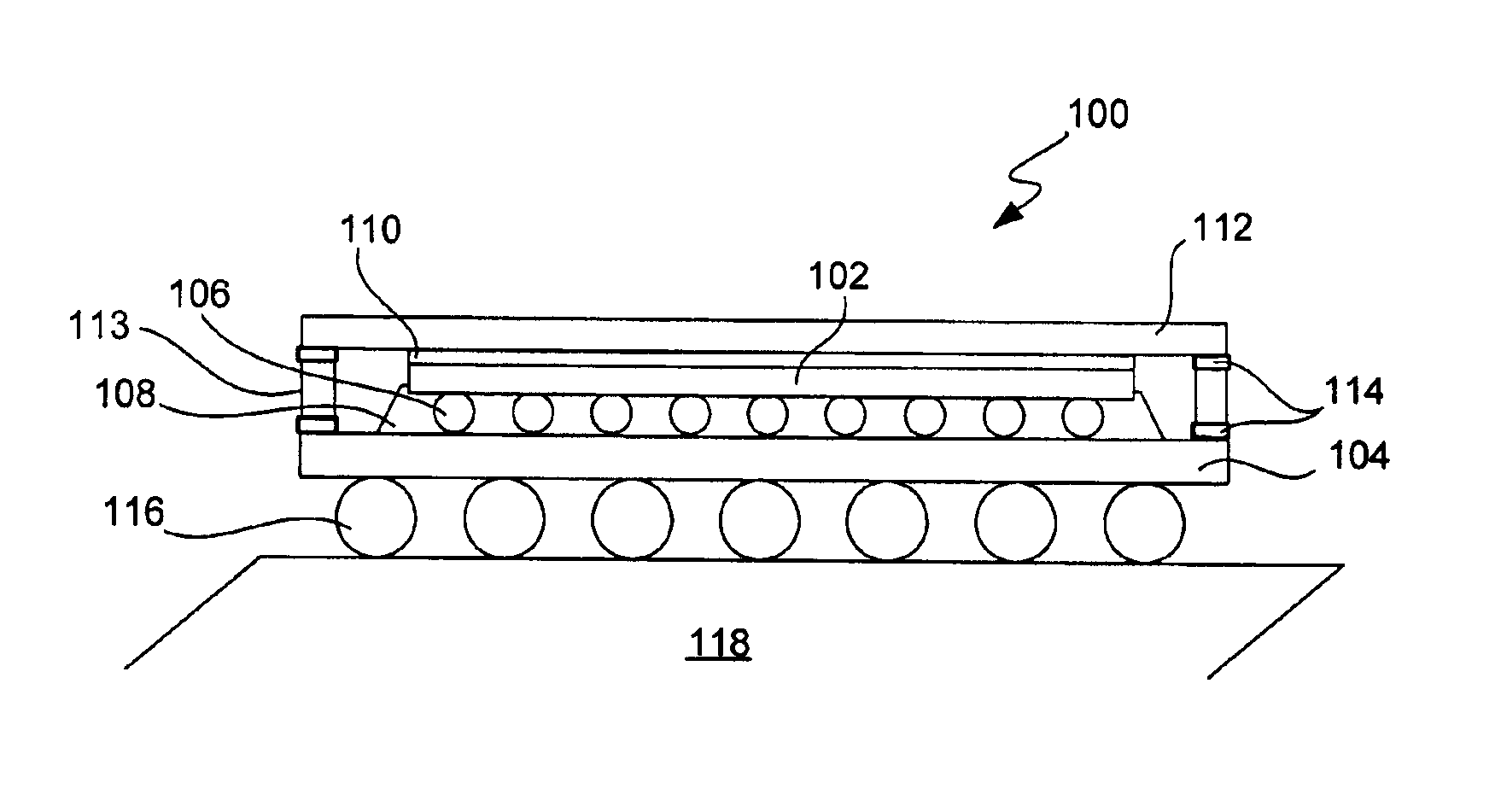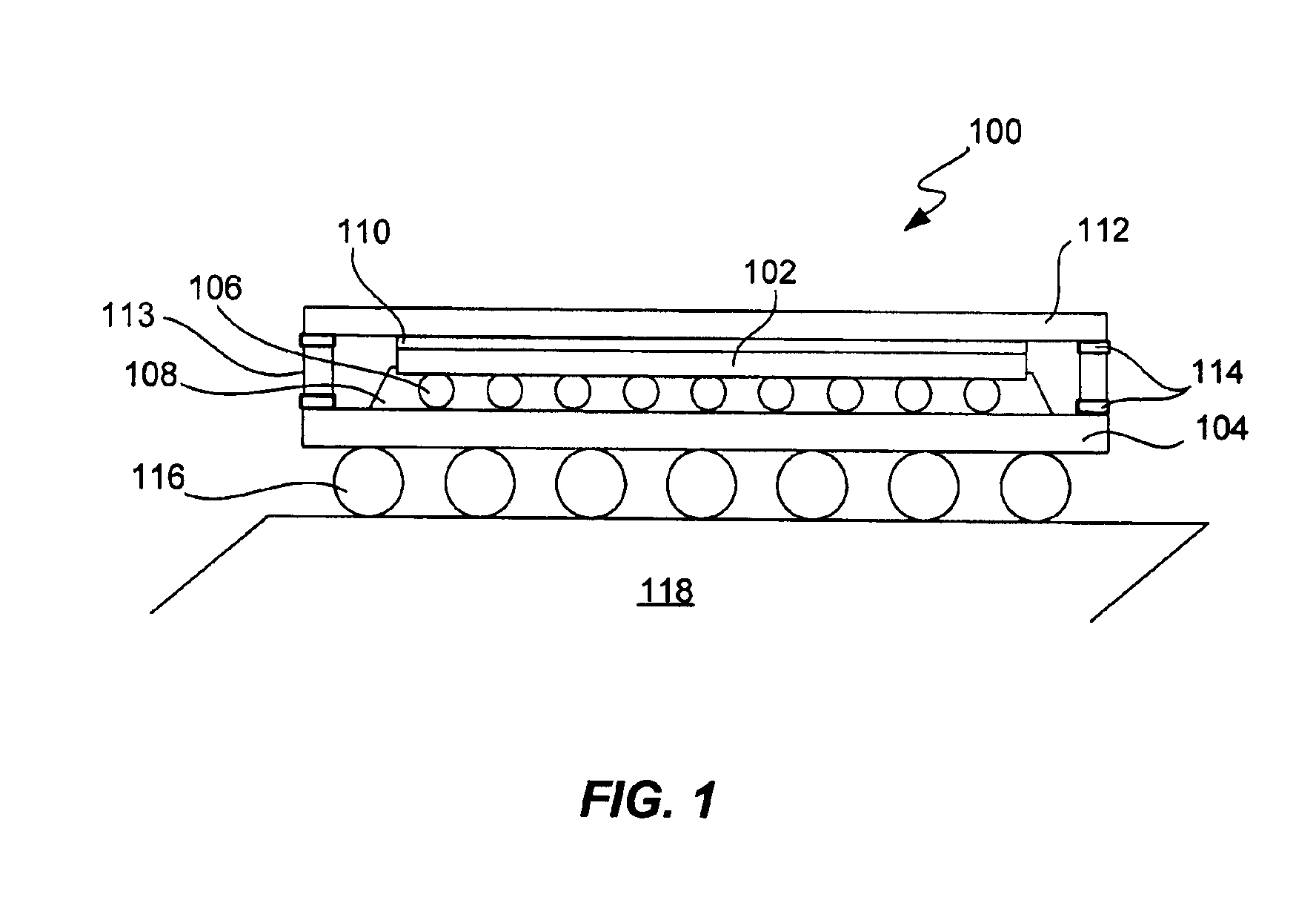Structure and material for assembling a low-K Si die to achieve a low warpage and industrial grade reliability flip chip package with organic substrate
a technology of flip chip and organic substrate, which is applied in the direction of semiconductor/solid-state device details, electrical equipment, semiconductor devices, etc., can solve the problems of significant packaging problems, semiconductor packages are typically subject to temperature cycling during normal operation, and the low-k material is usually very brittle, so as to reduce the amount of bowing, and improve the co-planarity
- Summary
- Abstract
- Description
- Claims
- Application Information
AI Technical Summary
Benefits of technology
Problems solved by technology
Method used
Image
Examples
example
[0043]The following example provides details concerning semiconductor low-K Si die flip chip packages with warpage control in accordance with specific embodiments of the present invention. It should be understood the following is representative only, and that the invention is not limited by the detail set forth in this example.
[0044]A Stratix 1S60-F1020 die (e.g., 20 mm×22 mm die), available from Altera, Inc. of San Jose, modified with a plurality of low-K dielectric layers was provided along with a 33 mm×33 mm 6-layer build up organic substrate, available from Kyocera of Kyoto, Japan. The die had a CTE in the range about 2.6 ppm whereas the substrate had a CTE in the range about 17 ppm. The provided combination was subjected to warpage testing and to reliability testing (e.g., industrial grade reliability test of thermal cycling condition B (−55° C. to 125° C.); JESD22-A104; Mil Std 1010) under different modeling arrangements to determine their conformance thereof. The different mo...
PUM
 Login to View More
Login to View More Abstract
Description
Claims
Application Information
 Login to View More
Login to View More - R&D
- Intellectual Property
- Life Sciences
- Materials
- Tech Scout
- Unparalleled Data Quality
- Higher Quality Content
- 60% Fewer Hallucinations
Browse by: Latest US Patents, China's latest patents, Technical Efficacy Thesaurus, Application Domain, Technology Topic, Popular Technical Reports.
© 2025 PatSnap. All rights reserved.Legal|Privacy policy|Modern Slavery Act Transparency Statement|Sitemap|About US| Contact US: help@patsnap.com


